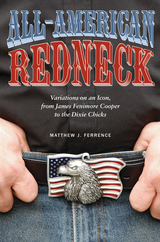
for everything from movies like Smokey and the Bandit to comedy acts like Larry the
Cable Guy. Even a recent president, George W. Bush, shunned his patrician pedigree in favor
of cowboy “authenticity” to appeal to voters. Whether identified with hard work and patriotism
or with narrow-minded bigotry, the Redneck and its variants have become firmly
established in American narrative consciousness.
This provocative book traces the emergence of the faux-Redneck within the context of
literary and cultural studies. Examining the icon’s foundations in James Fenimore Cooper’s
Natty Bumppo—“an ideal white man, free of the boundaries of civilization”—and the degraded
rural poor of Erskine Caldwell’s Tobacco Road, Matthew Ferrence shows how Redneck
stereotypes were further extended in Deliverance, both the novel and the film, and in
a popular cycle of movies starring Burt Reynolds in the 1970s and ’80s, among other manifestations.
As a contemporary cultural figure, the author argues, the Redneck represents
no one in particular but offers a model of behavior and ideals for many. Most important,
it has become a tool—reductive, confining, and (sometimes, almost) liberating—by which
elite forces gather and maintain social and economic power. Those defying its boundaries,
as the Dixie Chicks did when they criticized President Bush and the Iraq invasion, have
done so at their own peril. Ferrence contends that a refocus of attention to the complex
realities depicted in the writings of such authors as Silas House, Fred Chappell, Janisse Ray,
and Trudier Harris can help dislodge persistent stereotypes and encourage more nuanced
understandings of regional identity.
In a cultural moment when so-called Reality Television has turned again toward popular
images of rural Americans (as in, for example, Duck Dynasty and Moonshiners), All-
American Redneck reveals the way in which such images have long been manipulated for
particular social goals, almost always as a means to solidify the position of the powerful at
the expense of the regional.
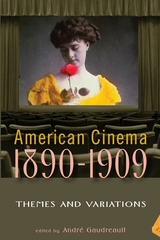
The essays in American Cinema 1890-1909 explore and define how the making of motion pictures flowered into an industry that would finally become the central entertainment institution of the world. Beginning with all the early types of pictures that moved, this volume tells the story of the invention and consolidation of the various processes that gave rise to what we now call "cinema." By examining the battles over patents, production, exhibition, and the reception of film, readers learn how going to the movies became a social tradition in American society.
In the course of these two decades, cinema succeeded both in establishing itself among other entertainment and instructional media and in updating various forms of spectacle.
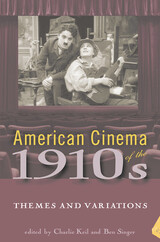
The essays in American Cinema of the 1910s explore the rapid developments of the decade that began with D. W. Griffith's unrivaled one-reelers. By mid-decade, multi-reel feature films were profoundly reshaping the industry and deluxe theaters were built to attract the broadest possible audience. Stars like Mary Pickford, Charlie Chaplin, and Douglas Fairbanks became vitally important and companies began writing high-profile contracts to secure them. With the outbreak of World War I, the political, economic, and industrial groundwork was laid for American cinema's global dominance. By the end of the decade, filmmaking had become a true industry, complete with vertical integration, efficient specialization and standardization of practices, and self-regulatory agencies.
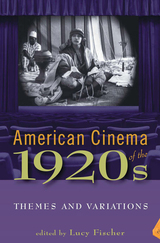
In ten original essays, American Cinema of the 1920s examines the film industry's continued growth and prosperity while focusing on important themes of the era.
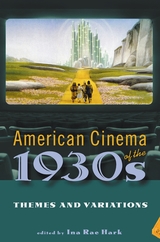
The ten original essays in American Cinema of the 1930s focus on sixty diverse films of the decade, including Dracula, The Public Enemy, Trouble in Paradise, 42nd Street, King Kong, Imitation of Life, The Adventures of Robin Hood, Swing Time, Angels with Dirty Faces, Nothing Sacred, Jezebel, Mr. Smith Goes toWashington, and Stagecoach .
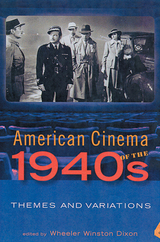
The 1940s was a watershed decade for American cinema and the nation. Shaking off the grim legacy of the Depression, Hollywood launched an unprecedented wave of production, generating some of its most memorable classics, including Citizen Kane, Rebecca, The Lady Eve, Sergeant York, and How Green Was My Valley. In 1942, Hollywood joined the national war effort with a vengeance, creating a series of patriotic and escapist films, such as Casablanca, Mrs. Miniver, The Road to Morocco, and Yankee Doodle Dandy.
With the end of the war, returning GIs faced a new America, in which the country had been transformed overnight. Film noir reflected a new public mood of pessimism and paranoia, in such classic films of betrayal and conflict as Kiss of Death, Force of Evil, Caught, and Apology for Murder, depicting a poisonous universe of femme fatales, crooked lawyers, and corrupt politicians.
With the threat of the atom bomb lurking in the background and the beginnings of the Hollywood Blacklist, the 1940s was a decade of crisis and change. Featuring essays by a group of respected film scholars and historians, American Cinema of the 1940s brings this dynamic and turbulent decade to life. Illustrated with many rare stills and filled with provocative insights, the volume will appeal to students, teachers, and to all those interested in cultural history and American film of the twentieth century.
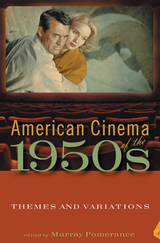
From cold war hysteria and rampant anticommunist witch hunts to the lure of suburbia, television, and the new consumerism, the 1950s was a decade of sensational commercial possibility coupled with dark nuclear fears and conformist politics. Amid this amalgamation of social, political, and cultural conditions, Hollywood was under siege: from the Justice Department, which pressed for big film companies to divest themselves of their theater holdings; from the middleclass, whose retreat to family entertainment inside the home drastically decreased the filmgoing audience; and from the House Un-American Activities Committee, which was attempting to purge the country of dissenting political views. In this difficult context, however, some of the most talented filmmakers of all time, including John Ford, Alfred Hitchcock, Vincente Minnelli, Nicholas Ray, and Billy Wilder produced some of their most remarkable work.
Bringing together original essays by ten respected scholars in the field, American Cinema of the 1950s explores the impact of the cultural environment of this decade on film, and the impact of film on the American cultural milieu. Contributors examine the signature films of the decade, including From Here to Eternity, Sunset Blvd., Singin' in the Rain, Shane, Rear Window, and Rebel Without a Cause, as well as lesser-known but equally compelling films, such as Dial 1119, Mystery Street, Suddenly, Summer Stock, The Last Hunt, and many others.
Provocative, engaging, and accessible to general readers as well as scholars, this volume provides a unique lens through which to view the links between film and the prevailing social and historical events of the decade.
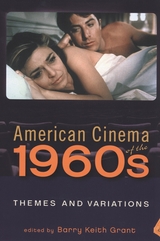
At the same time, American cinema underwent radical change as well. The studio system crumbled, and the Production Code was replaced by a new ratings system. Among the challenges faced by the film industry was the dawning shift in theatrical exhibition from urban centers to surburban multiplexes, an increase in runaway productions, the rise of independent producers, and competition from both television and foreign art films. Hollywood movies became more cynical, violent, and sexually explicit, reflecting the changing values of the time.
In ten original essays, American Cinema of the 1960s examines a range of films that characterized the decade, including Hollywood movies, documentaries, and independent and experimental films. Among the films discussed are Elmer Gantry, The Apartment, West Side Story, The Manchurian Candidate, To Kill a Mockingbird, Cape Fear, Bonnie and Clyde, 2001: A Space Odyssey, Midnight Cowboy, and Easy Rider.
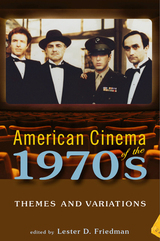
Far from a placid era, the seventies was a decade of social upheavals. Events such as the killing of students at Kent State and Jackson State universities, the Watergate investigations, the legalization of abortion, and the end of the American involvement in Vietnam are only a few among the many landmark occurrences that challenged the foundations of American culture. The director-driven movies of this era reflect this turmoil, experimenting with narrative structures, offering a gallery of scruffy antiheroes, and revising traditional genre conventions.
Bringing together ten original essays, American Cinema of the 1970s examines the range of films that marked the decade, including Jaws, Rocky, Love Story, Shaft, Dirty Harry, The Godfather, Deliverance, The Exorcist, Shampoo, Taxi Driver, Star Wars, Saturday Night Fever, Kramer vs. Kramer,and Apocalypse Now .
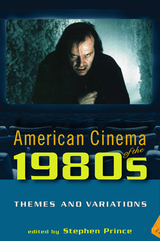
Bringing together original essays by ten respected scholars in the field, American Cinema of the 1980s examines the films that marked the decade, including Ordinary People, Body Heat, Blade Runner, Zelig, Platoon, Top Gun, Aliens, Blue Velvet, Robocop, Fatal Attraction, Die Hard, Batman, and sex, lies & videotape.
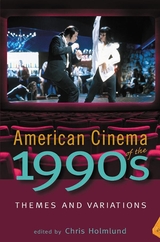
The essays in American Cinema of the 1990s examine the big-budget blockbusters and critically acclaimed independent films that defined the decade. The 1990s' most popular genre, action, channeled anxieties about global threats such as AIDS and foreign terrorist attacks into escapist entertainment movies. Horror films and thrillers were on the rise, but family-friendly pictures and feel-good romances netted big audiences too. Meanwhile, independent films captured hearts, engaged minds, and invaded Hollywood: by decade's end every studio boasted its own "art film" affiliate.
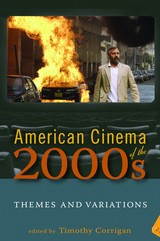
The decade from 2000 to 2009 is framed, at one end, by the traumatic catastrophe of the 9/11 attacks on the World Trade Center and, at the other, by the election of the first African American president of the United States. In between, the United States and the world witnessed the rapid expansion of new media and the Internet, such natural disasters as Hurricane Katrina, political uprisings around the world, and a massive meltdown of world economies.
Amid these crises and revolutions, American films responded in multiple ways, sometimes directly reflecting these turbulent times, and sometimes indirectly couching history in traditional genres and stories. In American Cinema of the 2000s, essays from ten top film scholars examine such popular series as the groundbreaking Matrix films and the gripping adventures of former CIA covert operative Jason Bourne; new, offbeat films like Juno; and the resurgence of documentaries like Michael Moore’s Fahrenheit 9/11. Each essay demonstrates the complex ways in which American culture and American cinema are bound together in subtle and challenging ways.
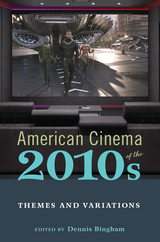
The newest installment in the Screen Decades series, American Cinema in the 2010s takes a close look at the memorable movies, visionary filmmakers, and behind-the-scenes drama that made this decade such an exciting time to be a moviegoer. Each chapter offers an in-depth examination of a specific year, covering a wide variety of films, from blockbuster superhero movies like Black Panther and animated films like Frozen to smaller-budget biopics like I, Tonya and horror films like Hereditary. This volume introduces readers to a decade in which established auteurs like Quentin Tarantino were joined by an exceptionally diverse set of new talents, taking American cinema in new directions.
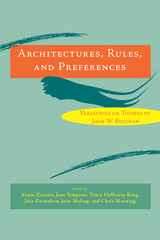
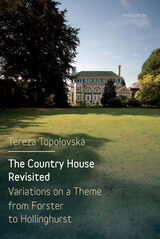

In this first full-scale examination of the theme-and-variations form in the Classical era, Elaine Sisman demonstrates persuasively that it was Haydn's prophetic innovationsplacing the variation in every position of a multi-movement cycle, broadening its array of theme types, and transforming its larger shapethat truly created the Classical variation. She elucidates the concept and technique of variation, traces Haydn's development and use of the form in symphonies, chamber music, and keyboard works, and then shows how Mozart and Beethoven in their individual ways built on his contributions.
Throughout, Sisman's analysis reflects both musical thinking of the Classical period and today's critical interests. She discusses ornamentation and musical figures, explores the pervasive eighteenth-century notion of music as rhetoric, and relates the style of the variation to that of the other dominant form in this period: sonata form. Her book offers a revaluation of the nature of the variation form and a new approach to the music of Haydn. Haydn and the Classical Variation is addressed to students and scholars of music, but the author's unaffected style makes it accessible to nonprofessional music lovers as well.
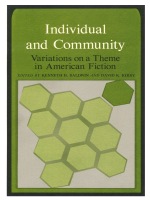
The essays are intended to point to the continuity of an important theme in American fiction and to offer insight into the variety of philosophical and literary strategies utilized in significant works of significant authors in dealing with the question of the individual and the community.
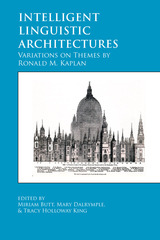
Ronald M. Kaplan has made foundational contributions to the development of computational linguistic research and linguistic theory, particularly within Lexical-Functional Grammar. Intelligent Linguistic Architectures, a tribute to Kaplan’s cutting-edge work, collects computational and theoretical linguistics papers in his research areas. From machine translation to grammar engineering, from formal issues to semantic theory, this ambitious volume represents the newest developments in linguistic scholarship.
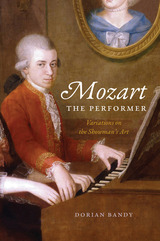
We know Mozart as one of history’s greatest composers. But his contemporaries revered him as a multi-instrumentalist, a dazzling improviser, and the foremost keyboard virtuoso of his time. When he composed, it was often with a single aim in mind: to set the stage, quite literally, for compelling and captivating performances. He wrote piano concertos not with an eye to posterity but to give himself a repertoire with which to flaunt his keyboard wizardry before an awestruck public. The same was true of his sonatas, string quartets, symphonies, and operas, all of which were painstakingly crafted to produce specific effects on those who played or heard them, amusing, stirring, and ravishing colleagues and consumers alike.
Mozart the Performer brings to life this elusive side of Mozart’s musicianship. Dorian Bandy traces the influence of showmanship on Mozart’s style, showing through detailed analysis and imaginative historical investigation how he conceived his works as a series of dramatic scripts. Mozart the Performer is a book for anyone who wishes to engage more deeply with Mozart’s artistry and legacy and understand why, centuries later, his music still captivates us.


The thirteen essays in this volume underscore the unity and diversity of music research today. Ranging in topic from Gregorian chant to Russian lament, Chinese opera to American spirituals, the essays span the early ninth to the late twentieth centuries and move geographically from East Asia to Europe, North America, and the Pacific. The essays focus on some of the central issues in current musicological and ethnomusicological research: the change and continuity in musical traditions, tune identity and metamorphosis, and the nature and function of musical notation.
Owing to the musical material, the diverse cultural contexts, and the different approaches and methodologies employed, the same theoretical issues are formulated and addressed in various ways. It is through variations that themes grow in significance and beauty. The unity in and coherence of modern musicological discourse, though still elusive, are within reach in this volume.
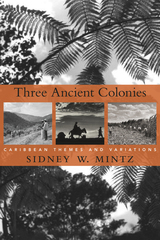
As a young anthropologist, Sidney Mintz undertook fieldwork in Jamaica, Haiti, and Puerto Rico. Fifty years later, the eminent scholar of the Caribbean returns to those experiences to meditate on the societies and on the island people who befriended him. These reflections illuminate continuities and differences between these cultures, but even more they exemplify the power of people to reveal their own history.
Mintz seeks to conjoin his knowledge of the history of Jamaica, Haiti, and Puerto Rico—a dynamic past born of a confluence of peoples of a sort that has happened only a few times in human history—with the ways that he heard people speak about themselves and their lives. Mintz argues that in Jamaica and Haiti, creolization represented a tremendous creative act by enslaved peoples: that creolization was not a passive mixing of cultures, but an effort to create new hybrid institutions and cultural meanings to replace those that had been demolished by enslavement. Globalization is not the new phenomenon we take it to be.
This book is both a summation of Mintz's groundbreaking work in the region and a reminder of how anthropology allows people to explore the deep truths that history may leave unexamined.

Although laws governing moving-traffic violations are fairly uniform throughout the United States, the effective levels of enforcement of these laws vary dramatically from city to city. Basing this study on statistics from nearly seven hundred police departments, census data, personal interviews, on-the-spot observation, and detailed case studies of four Massachusetts cities--Lynn, Waltham, Malden, and Cambridge--Mr. Gardiner identifies and discusses the factors that determine police decisionmaking in relation to traffic violations.
After a brief description of the role of various state and local agencies in settling traffic-enforcement policy, the author analyzes in depth the traffic activities of the four Massachusetts cities. He examines in particular the extent of public pressure in seeking modification of enforcement standards, intradepartmental practices, or "norms," and the role of traffic enforcement in the total spectrum of police activities.
Following the case studies, the author discusses the variations among the traffic policies of municipal police departments, and questions the "public pressure" interpretation of police policies. Mr. Gardiner finds that, although citizens and city officials frequently seek to influence individual decisions, they seldom know how strict or lenient their department's general policies are, and seldom care. In addition, the author finds no significant connection between the severity of ticketing policies and such factors as income, race, or education, but does find some correlation with the geographical stability of a city's population.
Finally, the author concludes that the chief source of departmental traffic policy is an internally established set of norms concerning the importance of traffic work and the frequency with which officers should write tickets. Evidence from cities that change their traffic policies indicates that individual preferences on the part of chiefs or ranking officers are the primary source of these norms.
This book is an important contribution to the growing area in social sciences that deals with law enforcement and, more broadly, local political systems.


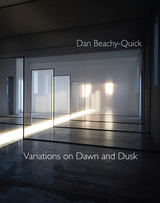
Building from Irwin’s use of rhythm and structure, the poems in this collection are constructed with an architectural framework. Rhythmic procedures inversely link the first and last words of the first and last lines of each poem and tie the number of lines to the number of syllables in the first line. These structures form a pattern, a thoughtful consistency through which we are invited to move and meditate with each variation of light.
READERS
Browse our collection.
PUBLISHERS
See BiblioVault's publisher services.
STUDENT SERVICES
Files for college accessibility offices.
UChicago Accessibility Resources
home | accessibility | search | about | contact us
BiblioVault ® 2001 - 2024
The University of Chicago Press









